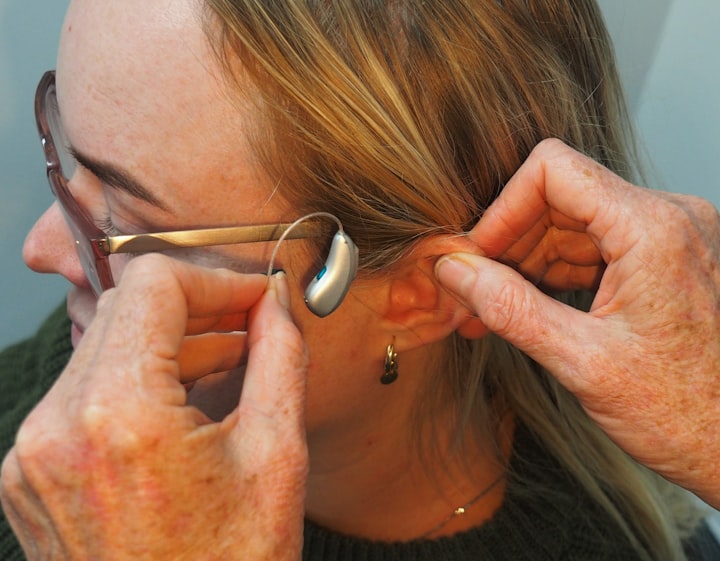8 Best Step To Start a Travel Blog
8 Best Step To Start a Travel Blog

8 Best Step To Start a Travel Blog
Starting a travel blog can be an exciting endeavor. To help you get started, here are eight essential steps to follow:
Determine your niche: Decide on the specific focus of your travel blog. It could be adventure travel, budget travel, luxury travel, solo travel, family travel, or any other niche that you're passionate about.
Choose a domain name: Select a unique and catchy domain name that reflects your blog's theme. Make sure it's easy to remember and related to travel. You can use domain registration websites like GoDaddy or Namecheap to check for availability and purchase your domain.
Set up a blogging platform: Choose a user-friendly and reliable blogging platform such as WordPress or Blogger. These platforms offer customizable templates and various plugins that will make it easier to manage your blog.
Select a hosting provider: Find a reliable web hosting provider to store your blog's data and make it accessible to your readers. Popular hosting providers include Bluehost, SiteGround, and HostGator. Consider factors such as uptime, customer support, and pricing when making your choice.
Customize your blog: Use a visually appealing and responsive theme that aligns with your blog's niche. Customize the design, layout, and colors to make it unique and reflect your brand. Install essential plugins for SEO optimization, social media integration, and analytics tracking.
Create compelling content: Start creating high-quality and engaging content that resonates with your target audience. Write informative articles, share personal experiences, provide travel tips, and include captivating photos and videos. Consistency is key, so aim for a regular posting schedule.
Promote your blog: Utilize social media platforms such as Instagram, Facebook, Twitter, and Pinterest to promote your blog and build a community. Engage with your audience, collaborate with other travel bloggers, and use relevant hashtags to increase visibility. Additionally, consider guest posting on established travel websites to expand your reach.
Monetize your blog: Once your blog gains traction, explore monetization options. These can include affiliate marketing, sponsored content, display advertising, selling digital products like e-books or courses, or even offering travel-related services. Be transparent with your audience about any sponsored or affiliate content.
Remember, building a successful travel blog takes time and effort. Stay consistent, be authentic, and continue learning and adapting your strategies along the way. Enjoy the journey and the experiences you share with your readers!
How do I start a blog in 8 easy steps?
Starting a blog can be a rewarding endeavor. Here are eight easy steps to help you get started:
Choose a blogging platform: Select a user-friendly platform such as WordPress, Blogger, or Wix. These platforms provide easy-to-use interfaces and customizable templates.
Pick a domain name: Select a unique and memorable domain name that reflects your blog's theme. Consider using domain registration websites like GoDaddy or Namecheap to check availability and purchase your domain.
Set up hosting: Find a hosting provider that suits your needs. Some popular options include Bluehost, SiteGround, and HostGator. Compare features and prices to make an informed decision.
Install your blogging platform: Follow the hosting provider's instructions to install your chosen blogging platform. Most hosting providers offer one-click installations, making the process quick and easy.
Customize your blog: Choose a visually appealing theme that aligns with your blog's niche. Customize the design, layout, and colors to match your branding. Install essential plugins for added functionality.
Create and publish content: Start creating compelling content for your blog. Write articles, share personal stories, offer insights, and provide value to your readers. Aim for a consistent posting schedule to keep your audience engaged.
Promote your blog: Utilize social media platforms like Facebook, Twitter, and Instagram to promote your blog. Share your posts, engage with your audience, and use relevant hashtags to increase visibility. Join blogging communities and collaborate with other bloggers to expand your reach.
Engage with your audience: Respond to comments and engage with your readers. Encourage discussion, ask for feedback, and build a community around your blog. Be open to suggestions and continuously improve your content based on your audience's interests.
Starting a blog is a journey that requires patience and perseverance. Enjoy the process, learn from your experiences, and adapt your strategies along the way. Remember, your blog is a reflection of your passion and expertise, so stay true to your unique voice and share valuable content with your readers.
How can I start my travel blog?
Starting a travel blog can be an exciting way to share your experiences and inspire others to explore the world. Here's a step-by-step guide on how to start your travel blog:
Define your niche: Determine the specific focus of your travel blog. It could be adventure travel, luxury travel, budget travel, solo travel, family travel, or any other area that interests you. Defining your niche will help you target a specific audience and differentiate your blog.
Choose a domain name: Select a unique and memorable domain name that represents your travel blog. Ideally, it should be short, easy to spell, and related to travel. Use domain registration websites like GoDaddy or Namecheap to check if your desired domain name is available.
Set up hosting and install WordPress: Look for a reliable web hosting provider that offers WordPress installation. Bluehost is a popular choice as it offers a one-click WordPress installation. Sign up for a hosting plan and follow the instructions to install WordPress on your domain.
Customize your blog's design: Select a visually appealing and mobile-responsive WordPress theme that suits your travel blog's style. Customize the layout, fonts, colors, and logo to reflect your branding. You can find free and premium themes on websites like ThemeForest or the WordPress theme directory.
Install essential plugins: Enhance your blog's functionality by installing useful plugins. Some essential ones for a travel blog include Yoast SEO for search engine optimization, Jetpack for security and performance, WPForms for contact forms, and social sharing plugins like ShareThis or AddToAny.
Create compelling content: Start creating high-quality content that engages your readers. Write informative articles, share personal travel stories, provide destination guides, offer travel tips, and include captivating photos and videos. Aim for a consistent posting schedule to keep your audience engaged.
Promote your blog: Utilize social media platforms like Instagram, Facebook, Twitter, and Pinterest to promote your blog. Share your blog posts, engage with your audience, and use relevant hashtags. Additionally, consider collaborating with other travel bloggers, guest posting on established travel websites, or participating in online communities to expand your reach.
Monetize your blog: Once your blog gains traction, explore monetization options. This can include affiliate marketing, sponsored content, display advertising, selling digital products like e-books or photography, or even offering travel-related services. Research different monetization methods and choose the ones that align with your blog and audience.
Remember, building a successful travel blog takes time, effort, and consistency. Enjoy the journey, share your passion for travel, and provide value to your readers. Continuously learn and adapt your strategies based on your audience's feedback and interests.
How do you write a travel blog step by step?
Writing a travel blog can be a creative and enjoyable process. Here's a step-by-step guide to help you write a travel blog:
Choose a captivating topic: Select a specific travel destination, an interesting activity, or a unique experience as the focus of your blog post. This helps create a clear theme and makes your content more engaging.
Conduct thorough research: Gather information about the destination or activity you're writing about. Research its history, culture, attractions, local customs, and any practical information that would be useful to your readers.
Outline your blog post: Create a structure for your blog post by outlining the main points you want to cover. This will help organize your thoughts and ensure a logical flow in your writing.
Write a captivating introduction: Start your blog post with an attention-grabbing introduction that hooks your readers and gives them a sense of what to expect. It could be a captivating anecdote, a compelling question, or a vivid description of the destination or activity.
Provide detailed information: In the main body of your blog post, share detailed information about the destination or activity. Include practical tips, recommendations, and insights based on your personal experience or thorough research. Describe the sights, sounds, tastes, and emotions to make your readers feel like they're there with you.
Include personal anecdotes: Share personal stories and experiences related to the destination or activity. This adds a personal touch to your writing and makes it more relatable and authentic.
Use descriptive language: Paint a vivid picture with your words by using descriptive language. Use sensory details to describe the sights, sounds, smells, tastes, and feelings associated with the destination or activity. This helps transport your readers and make the experience more immersive.
Include engaging visuals: Enhance your blog post with high-quality photos and videos that showcase the destination or activity. Visuals add depth to your writing and make it more visually appealing.
End with a conclusion: Wrap up your blog post with a concise conclusion that summarizes the main points and leaves a lasting impression. You can end with a call to action, such as encouraging readers to share their own experiences or asking for their thoughts and recommendations.
Edit and proofread: Before publishing your blog post, review it for grammar, spelling, and clarity. Edit out any unnecessary content and ensure a smooth reading experience for your audience.
Optimize for SEO: Consider basic search engine optimization (SEO) techniques to improve your blog post's visibility. Use relevant keywords, create descriptive headings, and optimize your meta tags to increase the chances of your blog post being discovered by search engines.
Publish and promote: Once you're satisfied with your blog post, publish it on your travel blog. Share it on your social media platforms, engage with your audience, and encourage feedback and comments. Consider promoting your blog post through guest posting on other travel websites or collaborating with fellow travel bloggers.
Remember, writing a travel blog is a creative process, and your unique voice and perspective are what make it special. Enjoy the journey, have fun, and let your passion for travel shine through your writing.
What are the 11 steps in creating a blog?
Here are 11 steps to follow when creating a blog:
Determine your blog's purpose and niche: Decide on the main focus and purpose of your blog. Choose a niche or topic that you are passionate about and that will resonate with your target audience.
Choose a blogging platform: Select a user-friendly and feature-rich blogging platform. Popular options include WordPress, Blogger, and Wix. Consider factors such as customization options, ease of use, and scalability.
Select a domain name: Choose a unique and memorable domain name that reflects your blog's identity. Use domain registration websites to check for domain availability and register your chosen domain.
Set up hosting: Find a reliable web hosting provider that suits your needs. Consider factors such as server performance, uptime, customer support, and pricing. Some popular hosting providers include Bluehost, SiteGround, and HostGator.
Install your blogging platform: Follow the instructions provided by your hosting provider to install your chosen blogging platform. Most hosting providers offer one-click installations, making the process straightforward.
Customize your blog's design: Choose a visually appealing theme or template for your blog. Customize the design elements, layout, fonts, and colors to align with your branding. Many platforms offer customizable options to make your blog unique.
Install essential plugins: Enhance your blog's functionality by installing relevant plugins. Examples include plugins for search engine optimization (SEO), social media sharing, contact forms, and security. Research popular plugins and select those that will improve your blog's performance.
Create compelling content: Start creating high-quality and engaging content for your blog. Write articles, share your expertise, offer advice, and provide valuable information to your readers. Incorporate different media types like images, videos, and infographics to make your content visually appealing.
Develop a content strategy: Plan your blog's content by creating an editorial calendar or content schedule. Consistency is key, so establish a posting frequency that you can maintain. Determine the topics and types of content you want to cover to provide a well-rounded experience for your readers.
Promote your blog: Utilize various marketing channels to promote your blog and increase its visibility. Share your blog posts on social media platforms, engage with your audience, participate in relevant online communities, and consider guest posting on other websites to expand your reach.
Analyze and refine: Monitor your blog's performance using analytics tools like Google Analytics. Track your website traffic, user engagement, and conversion metrics. Use this data to gain insights into your audience's preferences and make adjustments to your content and promotion strategies accordingly.
Remember, building a successful blog takes time, effort, and consistent dedication. Be patient, stay true to your unique voice, and continually refine your blog based on feedback and analytics data.
About the Creator
daastanemusafir
https://daastan-e-musafir.com/






Comments
There are no comments for this story
Be the first to respond and start the conversation.